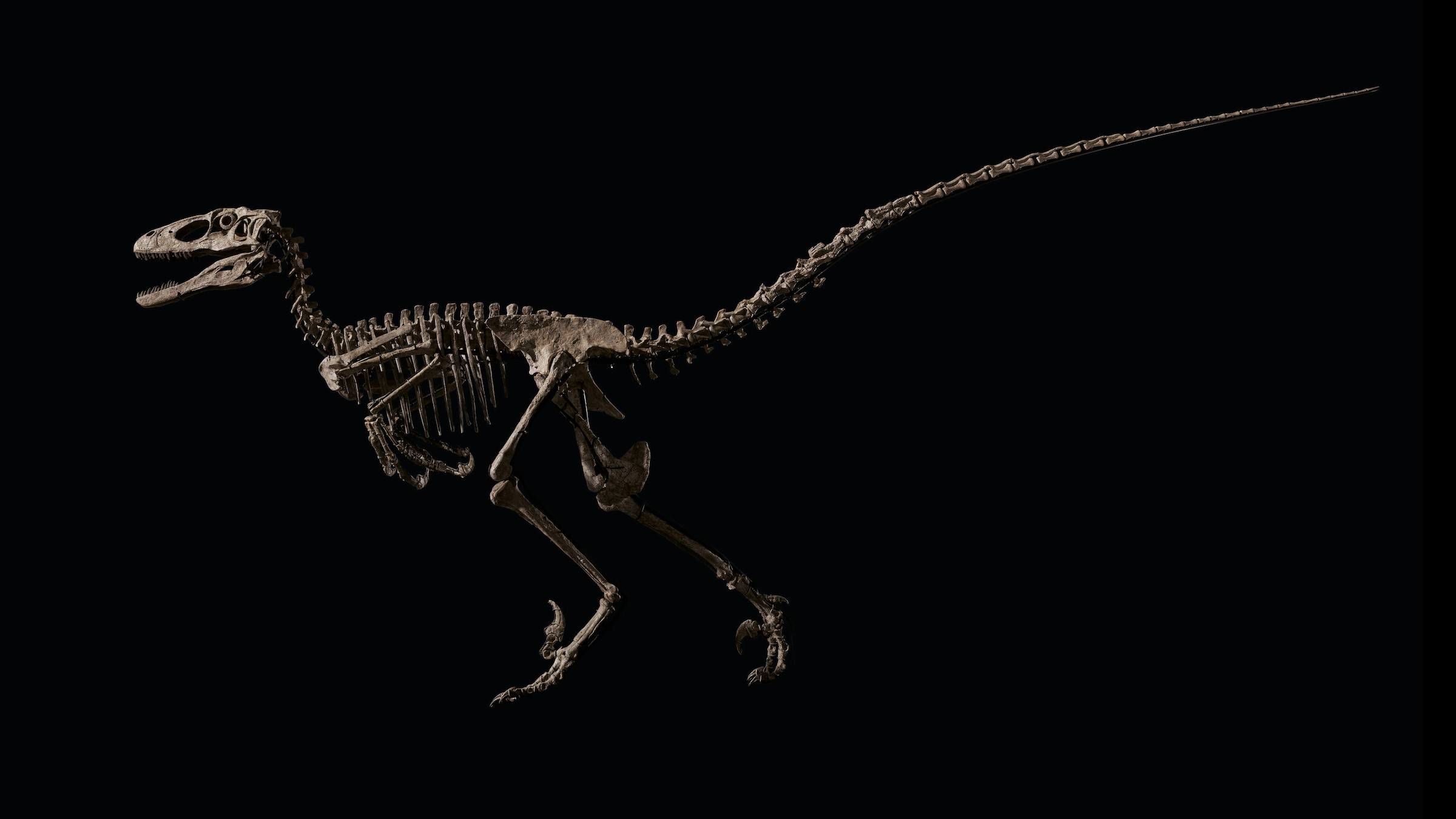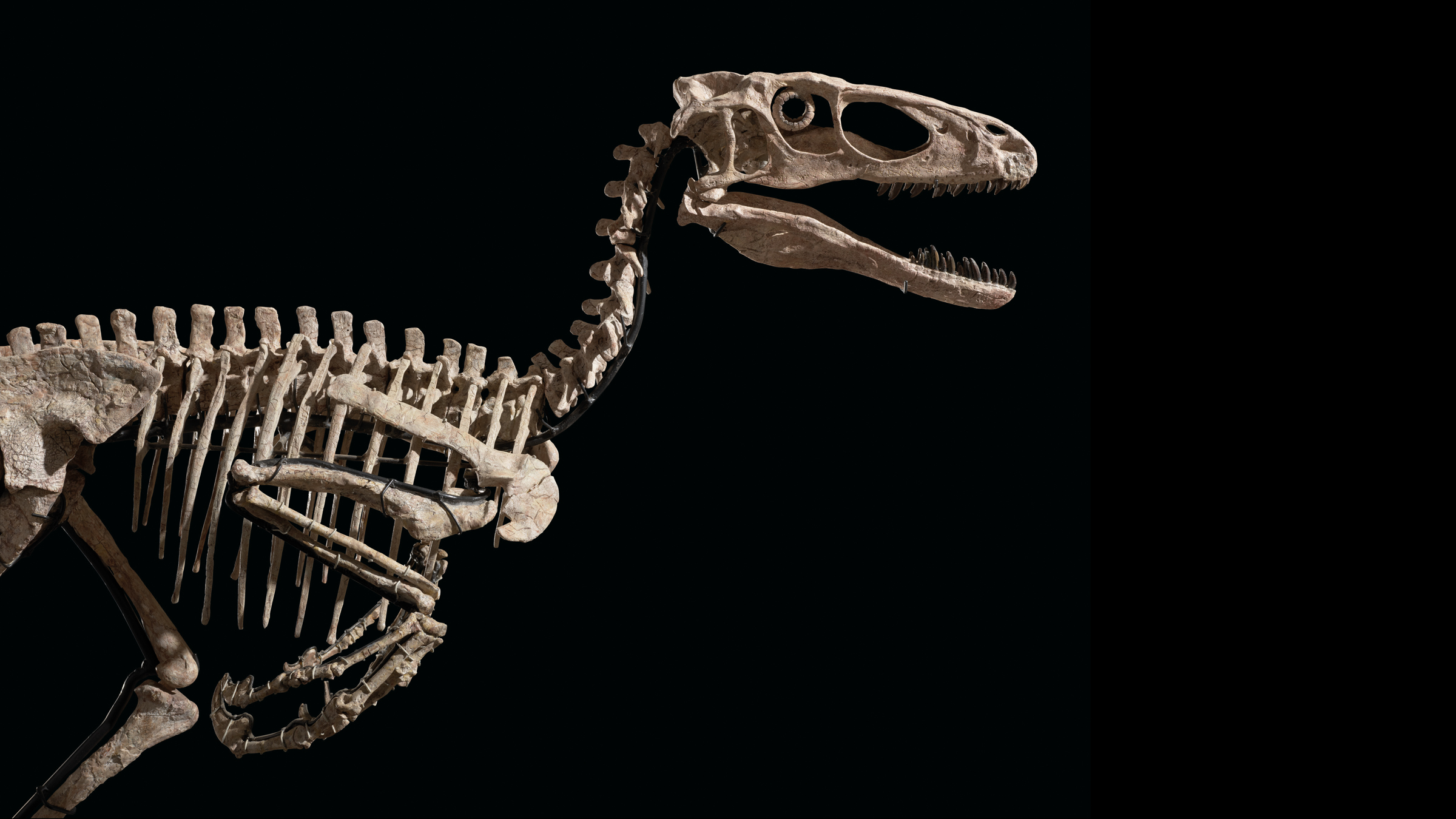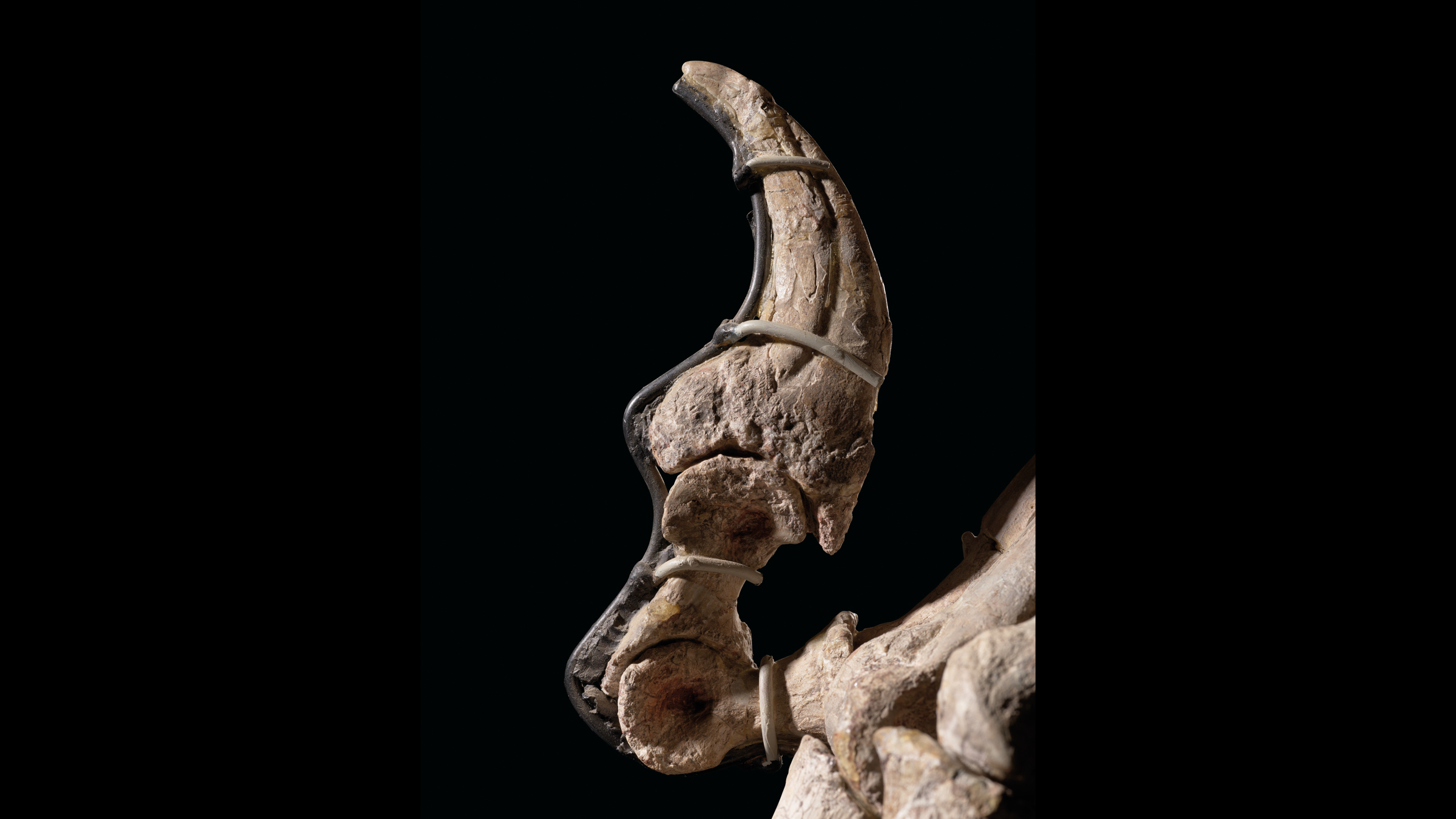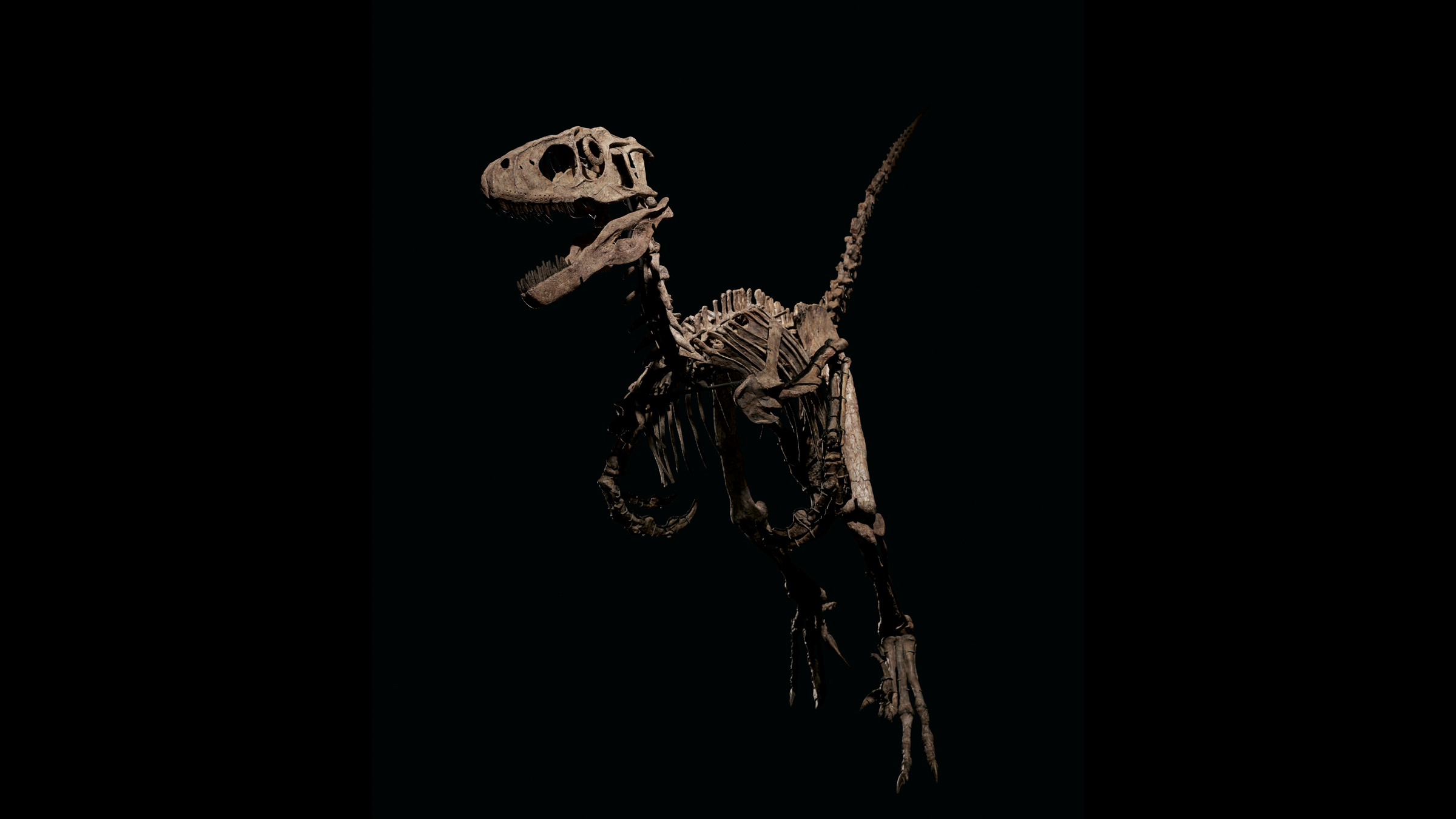Sold! Dinosaur skeleton that inspired Velociraptors from 'Jurassic Park' auctioned for $12.4 million
The remains of the dinosaur Deinonychus were found in Montana.

A rare dinosaur fossil of Deinonychus, the species that inspired the appearance and behavior of the fearsome Velociraptor in the "Jurassic Park" movies, just sold for the mammoth sum of $12.4 million on the auction block.
The 10-foot-long (3 meters) skeleton, unearthed in Montana in 2015, includes 126 fossilized bones of Deinonychus antirrhopus dating to between 115 million and 108 million years ago, during the Cretaceous period, according to Christie's, which held the auction on May 12.
The American paleontologist Barnum Brown discovered the first Deinonychus fossils in 1931, and later descriptions of the animal so awed Michael Crichton, the novelist behind the "Jurassic Park" series, that he rebranded the dinosaur as Velociraptor, a known turkey-size relative of Deinonychus from Mongolia, because he thought Velociraptor's name was "more dramatic."
But was it really? Deinonychus is a fairly metal name for those who know what it means — "terrible claw" in Greek, a fitting moniker for an athletic and sharp-toothed meat-eater that likely used its sickle-shaped toe claws to slash and disembowel prey. However, even the paleontologist who named Deinonychus in 1969 — John Ostrom at Yale University — later acknowledged in an interview with The New York Times that "most people don't understand Greek" and likely didn't appreciate the ferocity of the dinosaur's true name.
Related: Stan, most expensive T. rex ever sold, has finally been found
Thanks to Crichton's rebranding, when fans saw the dinosaurs that were called "Velociraptors" in "Jurassic Park," they were really seeing the movie's interpretation of Deinonychus.
However, movie fans aren't the only ones enamored with the paleo-beast; paleontologists are too, and many were dismayed to see an anonymous buyer take ownership of a superb Deinonychus specimen. Private individuals who buy fossils are under no obligation to share their purchases with scientists; even buyers who initially opt to display fossils in museums may pull them at any time, which means that scientists won't be able to confirm the findings of any colleagues who were briefly able to study such specimens.
Sign up for the Live Science daily newsletter now
Get the world’s most fascinating discoveries delivered straight to your inbox.



"Deinonychus is not a common fossil species by any stretch — its sample size is nowhere near what it is for big, more easily preserved species like T. rex (which isn't high to begin with) — and so to see a really fine specimen like that be sold is utterly confusing and exasperating: it should have been shepherded into a museum, not to the auctioneer's gavel," Thomas Carr, a vertebrate paleontologist and an associate professor of biology at Carthage College in Wisconsin, who was not involved with the fossil or auction, told Live Science in an email.
Of note, this particular Deinonychus skeleton was missing its skull and many other bones, so preparators filled in the missing parts with casts. "It's hard to imagine how such a small dinosaur skeleton — without a skull! — sold for three times the low rate for T. rex," which is about $5 million, Carr said.
The auctioned Deinonychus specimen is nicknamed Hector, after the legendary Trojan warrior in Homer's epic poem, "The Iliad." According to Christie's, Hector "is the most complete skeleton of his species ever found." It's likely that Hector and his fellow Deinonychus predators hunted in packs in what is now western North America, subduing prey with their deadly toe claws.
"It is believed that in order to use the claw with the highest degree of success, Deinonychus would have stood on one leg, holding the target with its long arms, and impaled its prey with a powerful kick," according to Christie's description.
After the 2015 excavation, Hector went on display at the Natural History Museum of Denmark in the exhibit "King of Dinosaurs," which ran from June 2020 to December 2021 and showed Hector alongside five other dinosaur species, including Tyrannosaurus rex. However, Deinonychus never crossed paths with a T. rex in real life; the latter lived from about 68 million to 66 million years ago, long after Deinonychus went extinct.
Hector is one of many dinosaur fossils that have hit the auction block in recent years. In 1997, the most complete T. rex skeleton on record, nicknamed Sue, sold for about $8.3 million ($14.9 million in today's dollars) to the Field Museum in Chicago, which relied on private donors to help raise the funds. In 2020, the most expensive dinosaur ever sold at auction — Stan the T. rex from South Dakota — sold for $31.8 million and is now in Abu Dhabi, awaiting the 2025 grand opening of a Natural History Museum.
Originally published on Live Science.

Laura is the archaeology and Life's Little Mysteries editor at Live Science. She also reports on general science, including paleontology. Her work has appeared in The New York Times, Scholastic, Popular Science and Spectrum, a site on autism research. She has won multiple awards from the Society of Professional Journalists and the Washington Newspaper Publishers Association for her reporting at a weekly newspaper near Seattle. Laura holds a bachelor's degree in English literature and psychology from Washington University in St. Louis and a master's degree in science writing from NYU.










